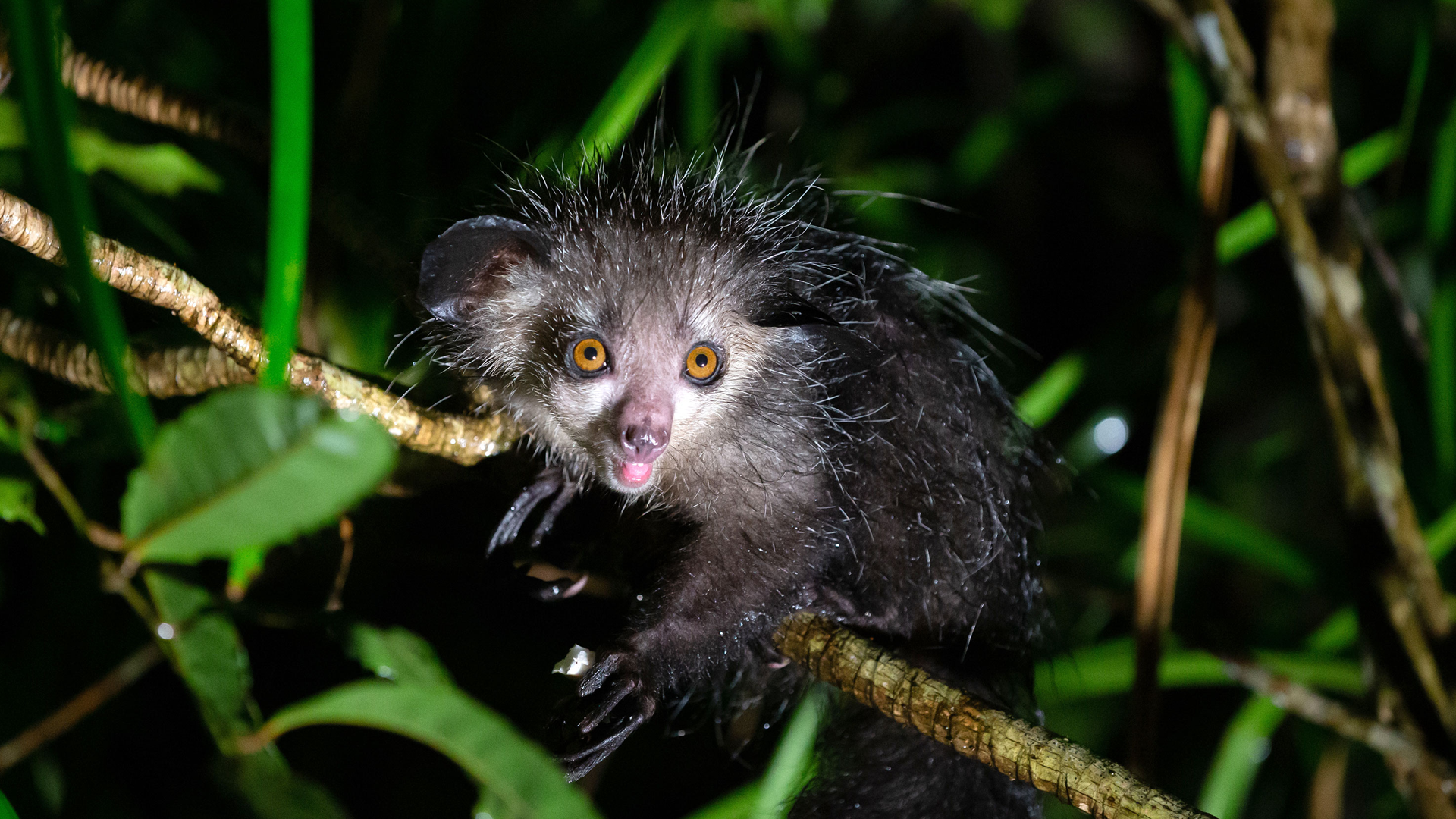Weird-looking primate's extra long fingers give it an extra-gross talent

Humans aren't the only animals to pick their nose and eat the contents, a new study has shown.
Researchers have for the first time documented the behavior in a primate known as the aye-aye, a most unusual-looking species of lemur. The Journal of Zoology published the findings on Wednesday.
Anne-Claire Fabre, a curator at the Natural History Museum of Bern, in Switzerland, and associate professor at the University of Bern, observed an aye-aye picking its nose while she was filming the animals at the Duke Lemur Center, a sanctuary and research facility in Durham, North Carolina.
Using a low-light camera, Fabre captured the female aye-aye, known as Kali, indulging in this questionable pastime.
"It was impossible not to notice this aye-aye picking its nose," Fabre, the study's lead author, said in a statement.
"This was not just a one-off behaviour but something that it was fully engaged in, inserting its extremely long finger a surprisingly long way down its nose and then sampling whatever it dug up by licking its finger clean!"
Including aye-ayes and humans, 12 species of primate have been observed snacking on snot.
Unlike humans' relatively short digits, the aye-aye's long and skinny middle finger is perfectly shaped for deep digging. A reconstruction of the animal's nasal passage based on a CT scan suggests its curved finger can reach all the way back into its throat to root around for mucus.
Not much is known about why certain animals pick their nose.
Aside from nasal exploration, the aye-aye's distinctive finger also helps it find food. The primate uses its elongated third finger to source its dinner by tapping on wood and listening to the reverberations before extracting the grubs within.
The aye-aye's long middle digit has also captured imaginations in its native Madagascar, with some believing the animal to have prophetic qualities. Local legend has it that if you find yourself at the end of an aye-aye's pointed finger, you're marked for death.
Roberto Portela Miguez, a senior curator at the Natural History Museum in London and study coauthor, expressed hope that this new research could ignite interest in the creepy-looking critter.
"Aye-ayes are highly endangered, and really need our help," he said. The rare species is threatened due to habitat loss and hunting.
"Papers like this can hopefully help draw attention to the species, highlight how little we may know about them and get more people to support their conservation."
The-CNN-Wire & 2022 Cable News Network, Inc., a Warner Bros. Discovery Company. All rights reserved.






